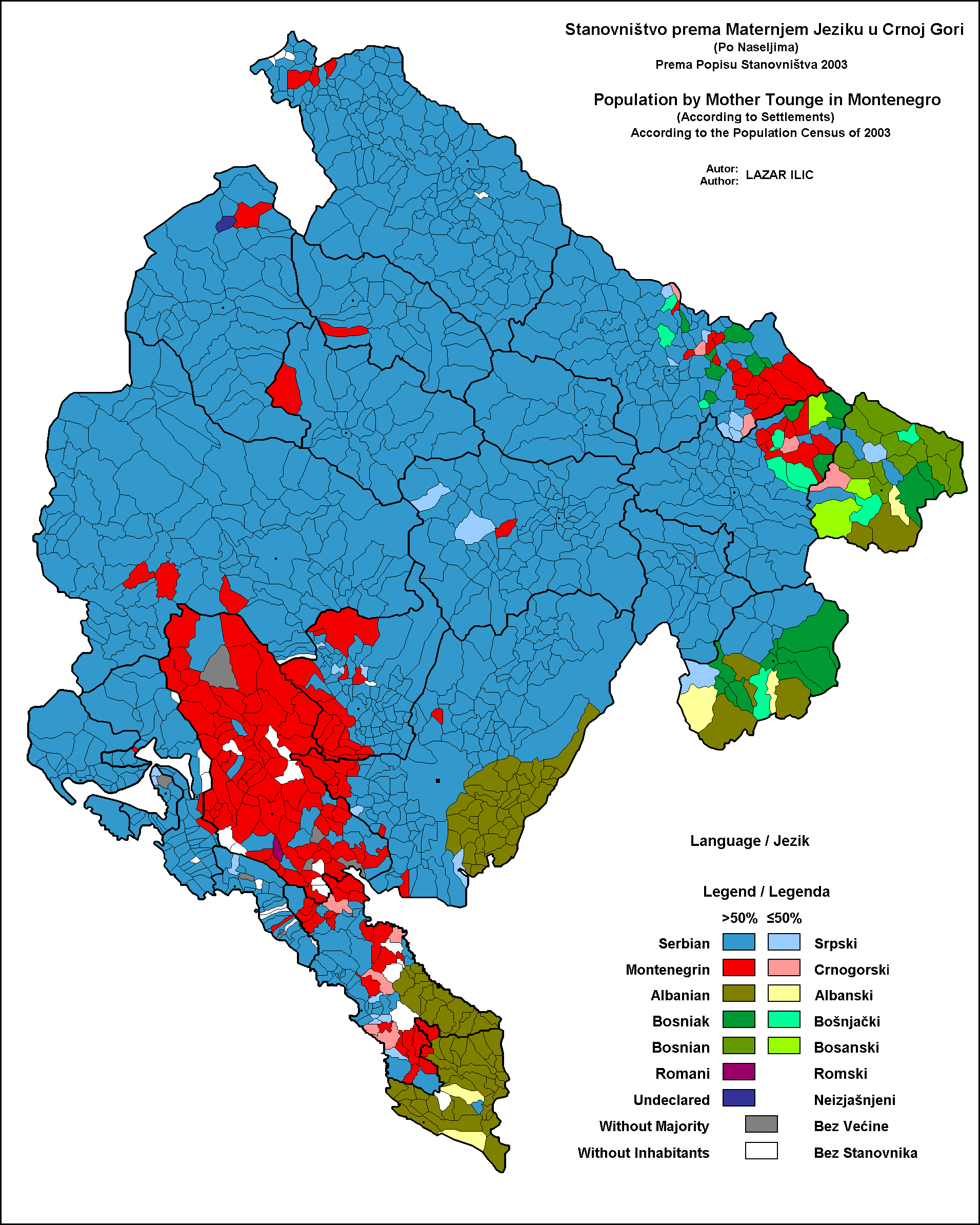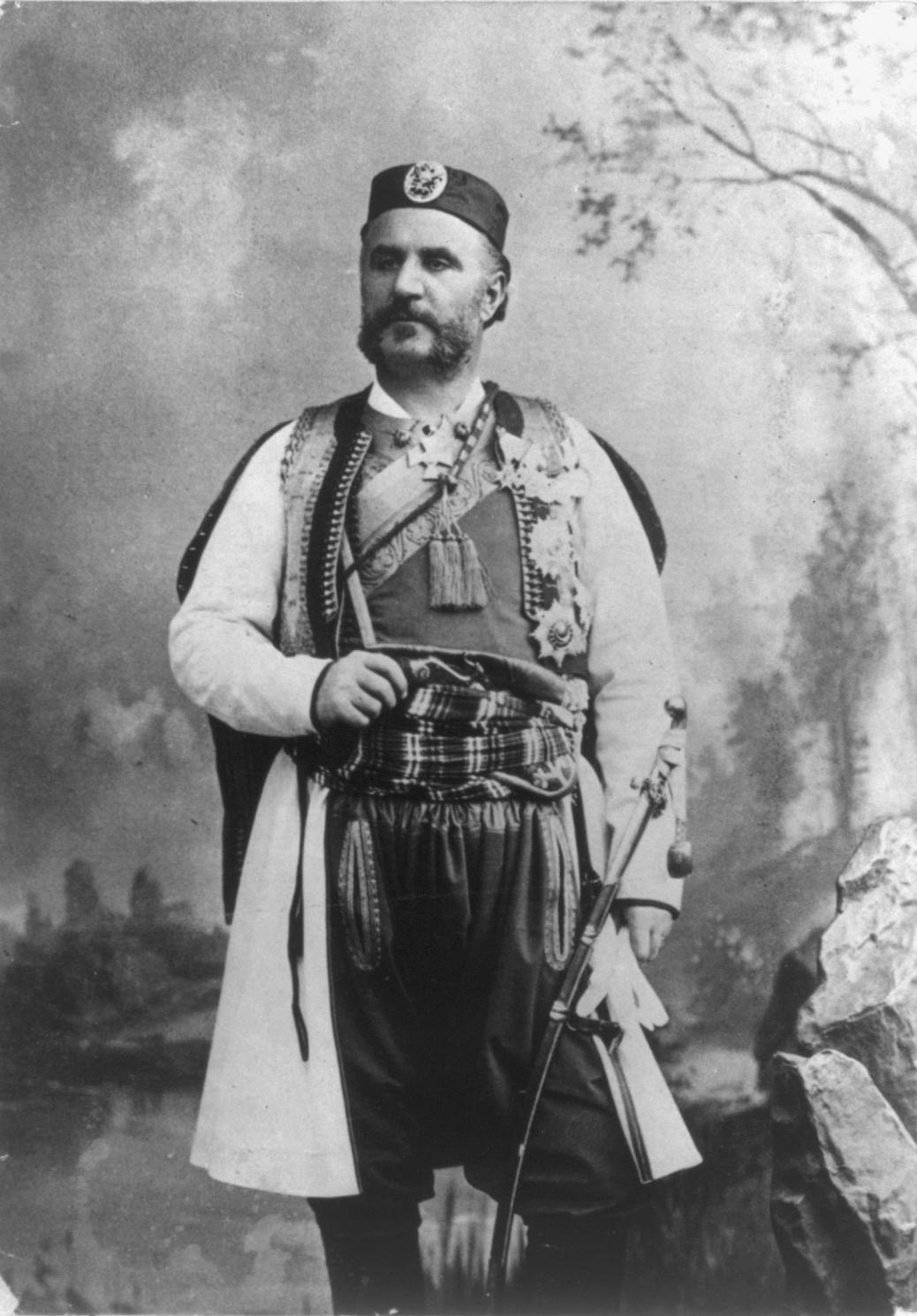|
Lower Kolašin
Lower Kolašin ( Montenegrin and sr-cyr, Доњи Колашин/Donji Kolašin) is a historical region in the present-day municipality of Bijelo Polje in northern Montenegro, towards Serbia. It is situated in the picturesque Vraneš valley formed around the river Ljuboviđa. The most important local populated centers are Tomaševo and Pavino Polje. Geography Lower Kolašin is a region situated in the northern part of Montenegro, at the border with Serbia. It is located between the rivers of Tara, Ljuboviđa, left tributary of Lim river and source of the Ćeotina. It is located at the left side of the Lim river, and its central part is made up of the valley of the Vraneš river. To the south lies the region of Upper Kolašin, around Mojkovac. On the other side of the Lim is the region of Bihor. History Middle Ages The Ljuboviđa ''župa'' (county) was mentioned in medieval documents beginning in 1281. It was named after a river that passed through the Vraneš valley. The c ... [...More Info...] [...Related Items...] OR: [Wikipedia] [Google] [Baidu] |
Montenegrin Language
Montenegrin ( ; cnr, label=none, / ) is a normative variety of the Serbo-Croatian language mainly used by Montenegrins and is the official language of Montenegro. Montenegrin is based on the most widespread dialect of Serbo-Croatian, Shtokavian, more specifically on Eastern Herzegovinian, which is also the basis of Standard Croatian, Serbian, and Bosnian. Montenegro's language has historically and traditionally been called either Serbian or Montenegrin. The idea of a standardized Montenegrin standard language separate from Serbian appeared in the 1990s during the breakup of Yugoslavia, through proponents of Montenegrin independence from the State Union of Serbia and Montenegro. Montenegrin became the official language of Montenegro with the ratification of a new constitution on 22 October 2007. Language standardization In January 2008, the government of Montenegro formed the Board (Council) for Standardization of the Montenegrin Language, which aims to standardize the ... [...More Info...] [...Related Items...] OR: [Wikipedia] [Google] [Baidu] |
Sanjak Of Novi Pazar
The Sanjak of Novi Pazar ( sh-Latn-Cyrl, Novopazarski sandžak, Новопазарски санџак; tr, Yeni Pazar sancağı) was an Ottoman sanjak (second-level administrative unit) that was created in 1865. It was reorganized in 1880 and 1902. The Ottoman rule in the region lasted until the First Balkan War (1912). The Sanjak of Novi Pazar included territories of present-day northeastern Montenegro and southwestern Serbia, also including some northern parts of Kosovo. In modern day terms, the borders of the region is known as Sandžak. History Background: Ottoman conquest of the Raška region During the Middle Ages, Raška was one of the central regions of Medieval Serbia. Incursions by Ottoman Turks began in late 14th century, following the Battle of Kosovo in 1389 and the creation of the Turkish frontier march ( sh, krajište) of Skopje in 1392. The final conquest of the Raška region occurred in 1455, when Isa-Beg Isaković, the Ottoman Bosnian governor of Skopje, ca ... [...More Info...] [...Related Items...] OR: [Wikipedia] [Google] [Baidu] |
Turkey
Turkey ( tr, Türkiye ), officially the Republic of Türkiye ( tr, Türkiye Cumhuriyeti, links=no ), is a list of transcontinental countries, transcontinental country located mainly on the Anatolia, Anatolian Peninsula in Western Asia, with a East Thrace, small portion on the Balkans, Balkan Peninsula in Southeast Europe. It shares borders with the Black Sea to the north; Georgia (country), Georgia to the northeast; Armenia, Azerbaijan, and Iran to the east; Iraq to the southeast; Syria and the Mediterranean Sea to the south; the Aegean Sea to the west; and Greece and Bulgaria to the northwest. Cyprus is located off the south coast. Turkish people, Turks form the vast majority of the nation's population and Kurds are the largest minority. Ankara is Turkey's capital, while Istanbul is its list of largest cities and towns in Turkey, largest city and financial centre. One of the world's earliest permanently Settler, settled regions, present-day Turkey was home to important Neol ... [...More Info...] [...Related Items...] OR: [Wikipedia] [Google] [Baidu] |
Bosnia And Herzegovina
Bosnia and Herzegovina ( sh, / , ), abbreviated BiH () or B&H, sometimes called Bosnia–Herzegovina and often known informally as Bosnia, is a country at the crossroads of south and southeast Europe, located in the Balkans. Bosnia and Herzegovina borders Serbia to the east, Montenegro to the southeast, and Croatia to the north and southwest. In the south it has a narrow coast on the Adriatic Sea within the Mediterranean, which is about long and surrounds the town of Neum. Bosnia, which is the inland region of the country, has a moderate continental climate with hot summers and cold, snowy winters. In the central and eastern regions of the country, the geography is mountainous, in the northwest it is moderately hilly, and in the northeast it is predominantly flat. Herzegovina, which is the smaller, southern region of the country, has a Mediterranean climate and is mostly mountainous. Sarajevo is the capital and the largest city of the country followed by Banja Luka, Tu ... [...More Info...] [...Related Items...] OR: [Wikipedia] [Google] [Baidu] |
Sandžak
Sandžak (; sh, / , ; sq, Sanxhaku; ota, سنجاق, Sancak), also known as Sanjak, is a historical geo-political region in Serbia and Montenegro. The name Sandžak derives from the Sanjak of Novi Pazar, a former Ottoman administrative district founded in 1865. Serbs usually refer to the region by its medieval name of Raška. Between 1878 and 1909 the region was placed under Austro-Hungarian occupation, following which it was ceded back to the Ottoman Empire. In 1912 the region was divided between the kingdoms of Montenegro and Serbia. The most populous city in the region is Novi Pazar in Serbia. Etymology ''Sandžak'' is the transcription of Turkish ''sancak'' (sanjak, "province"); the Sanjak of Novi Pazar, known in Serbo-Croatian as ''Novopazarski sandžak''. In Serbian, the region is known by its pre-Ottoman name, Raška. Geography Sandžak stretches from the southeastern border of Bosnia and Herzegovina to the borders with Kosovo and Albania at an area of around 8, ... [...More Info...] [...Related Items...] OR: [Wikipedia] [Google] [Baidu] |
Jusuf Mehonić
Yusuf ibn Ya'qub ibn Ishaq ibn Ibrahim ( ar, يوسف ٱبن يعقوب ٱبن إسحاق ٱبن إبراهيم, Yūsuf ibn Yaʿqūb ibn ʾIsḥāq ibn ʾIbrāhīm, ) is a prophet mentioned in the Quran, and corresponds to Joseph, a person from the Tanakh, the Jewish religious scripture, and the Christian Bible, who was estimated to have lived in Egypt before the New Kingdom. Of all of Jacob's children, Joseph was the one given the gift of prophecy. Although the narratives of other prophets are mentioned in various ''Surahs'', the complete narrative of Joseph is given only in one Surah, Yusuf, making it unique. It is said to be the most detailed narrative in the Qur'an and contains more details than the Biblical counterpart. Yusuf is believed to have been the eleventh son of Ya'qub ( ar, يعقوب, Ya'qub), and, according to many scholars, his favorite. According to Ibn Kathir, "Jacob had twelve sons who were the eponymous ancestors of the tribes of the Israelites. ... [...More Info...] [...Related Items...] OR: [Wikipedia] [Google] [Baidu] |
Boško Bošković
Boško ( Cyrillic script: Бошко) is a Slavic male given name. It may refer to: * Boško Abramović (born 1951), Serbian chess grandmaster * Boško Anić (born 1968), retired Croatian footballer * Boško Antić (1944–2007), Bosnian Serb footballer * Boško Balaban (born 1978), Croatian footballer * Boško Baškot (1921–2013), Yugoslav politician * Boško Boškovič (born 1969), retired Slovenian football goalkeeper * Boško Božinović (born 1949), Croatian conditioning coach and a retired middle-distance runner * Boško Buha (1926–1943), young Yugoslav Partisan and World War II icon * Boško Bursać (born 1945), former Bosnian Croat footballer * Boško Ćirković " Škabo" (born 1976), Serbian rapper * Boško Čvorkov (born 1978), Serbian footballer * Boško Đokić (born 1958), Serbian professional basketball coach and journalist * Boško Dopuđ (born 1990), Serbian football defender * Boško Đorđević (born 1953), retired Serbian footballer * Boško Drašković (born 1 ... [...More Info...] [...Related Items...] OR: [Wikipedia] [Google] [Baidu] |
First Balkan War
The First Balkan War ( sr, Први балкански рат, ''Prvi balkanski rat''; bg, Балканска война; el, Αʹ Βαλκανικός πόλεμος; tr, Birinci Balkan Savaşı) lasted from October 1912 to May 1913 and involved actions of the Balkan League (the Kingdoms of Kingdom of Bulgaria, Bulgaria, Kingdom of Serbia, Serbia, Kingdom of Greece, Greece and Kingdom of Montenegro, Montenegro) against the Ottoman Empire. The Balkan states' combined armies overcame the initially numerically inferior (significantly superior by the end of the conflict) and strategically disadvantaged Ottoman armies, achieving rapid success. The war was a comprehensive and unmitigated disaster for the Ottomans, who lost 83% of their European territories and 69% of their European population. [...More Info...] [...Related Items...] OR: [Wikipedia] [Google] [Baidu] |
Nikola I Petrović-Njegoš
Nikola I Petrović-Njegoš ( sr-cyr, Никола I Петровић-Његош; – 1 March 1921) was the last monarch of Montenegro from 1860 to 1918, reigning as prince from 1860 to 1910 and as the country's first and only king from 1910 to 1918. Biography Early life Nikola was born in the village of Njeguši, the home of the reigning House of Petrović. He was the son of Mirko Petrović-Njegoš, a celebrated Montenegrin warrior (an elder brother to Danilo I of Montenegro) and his wife, Anastasija Martinovich (1824–1895). After 1696, when the dignity of vladika, or prince-bishop, became hereditary in the Petrović family, the sovereign power had descended from uncle to nephew, the vladikas belonging to the order of the black clergy (i.e., monastic clergy) who are forbidden to marry. A change was introduced by Danilo I, who declined the episcopal office, married and declared the principality hereditary in the direct male line. Mirko Petrović-Njegoš having renounced his clai ... [...More Info...] [...Related Items...] OR: [Wikipedia] [Google] [Baidu] |
Nova Varoš
Nova Varoš ( sr-cyr, Нова Варош, ) is a town and municipality located in the Zlatibor District of southwestern Serbia. The municipality of Nova Varoš has a population of 16,638, while the town of Nova Varoš itself has a population of 8,795 inhabitants. History Nova Varoš was founded in the middle of the 16th century. It is associated with the name of Skender-pasha of Genoa. When Skender-pasha, traveling from Bosnia to Constantinople (1530), stopped with his entourage on the plateau below the mountain Zlatar and was delighted with the beauty of this wooded area and the intoxicating smell of pine, he ordered a town to be built there. Settlements soon sprang up on the site of today's Nova Varoš. It was called Skender-pašina palanka (''Skender-pasha's Palanka''). When it grew to close to 2,000 houses, "a fire broke out and burned the palace to the ground" (Evliya Çelebi). Most of the inhabitants stayed there and built a new town which they called Jeni Kasaba, which i ... [...More Info...] [...Related Items...] OR: [Wikipedia] [Google] [Baidu] |




